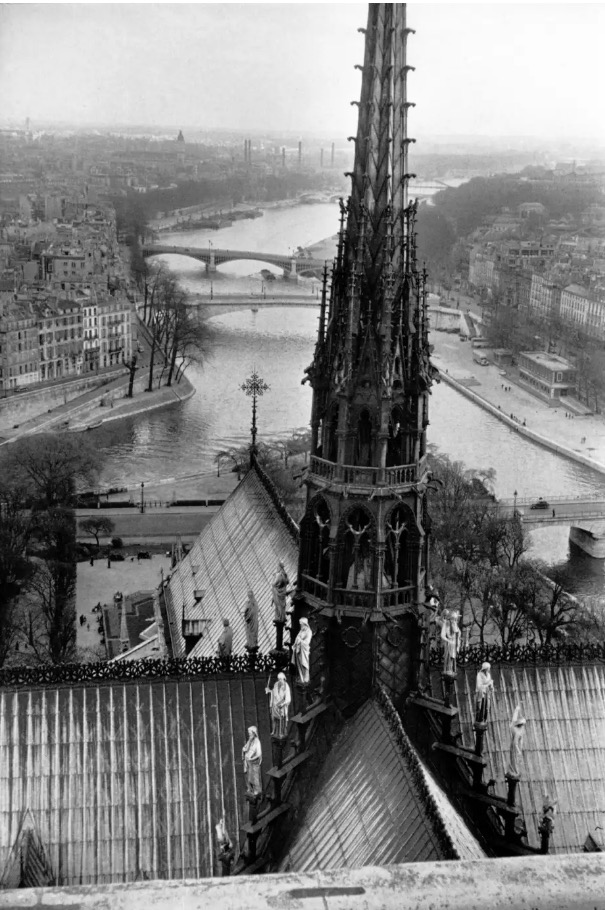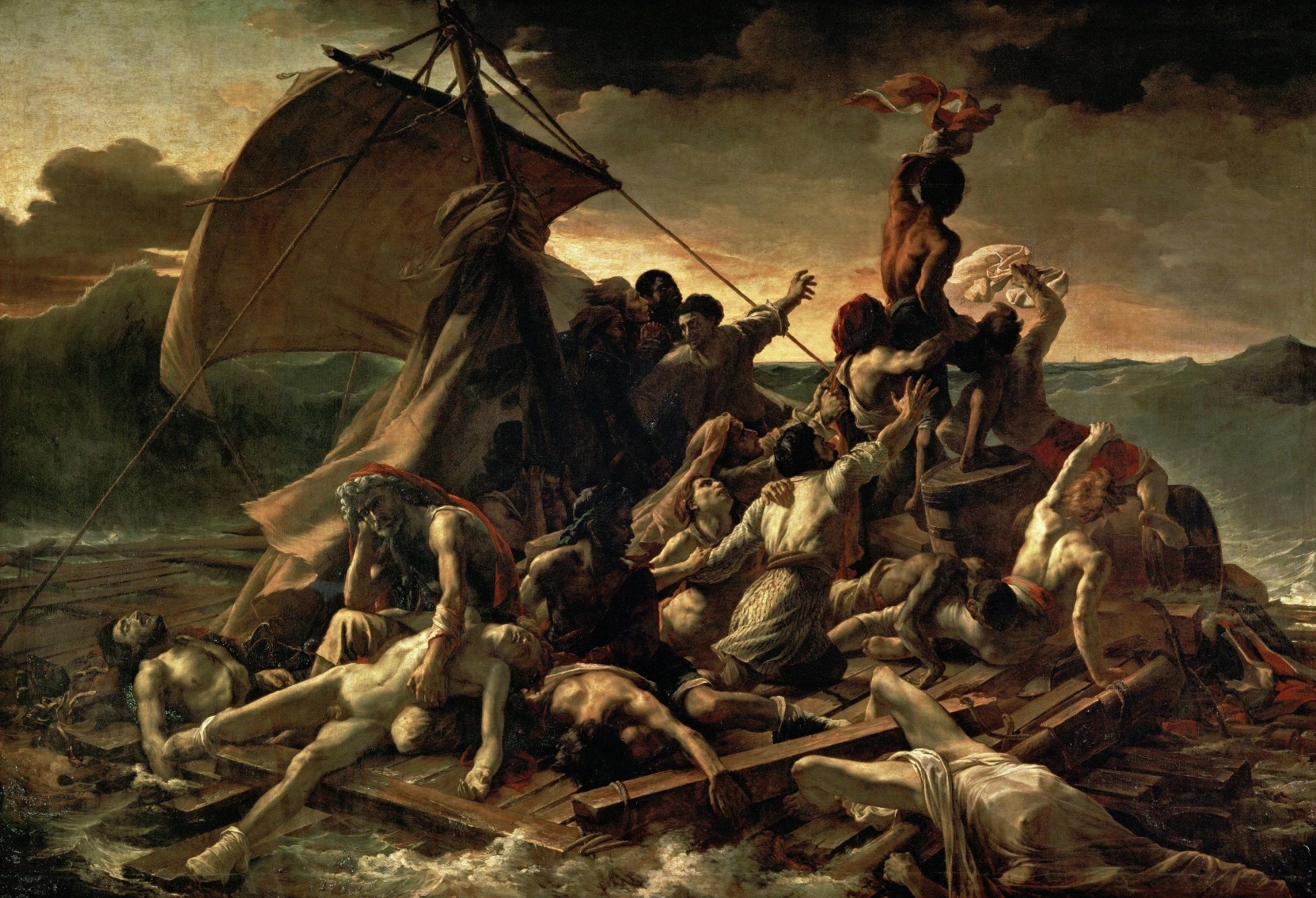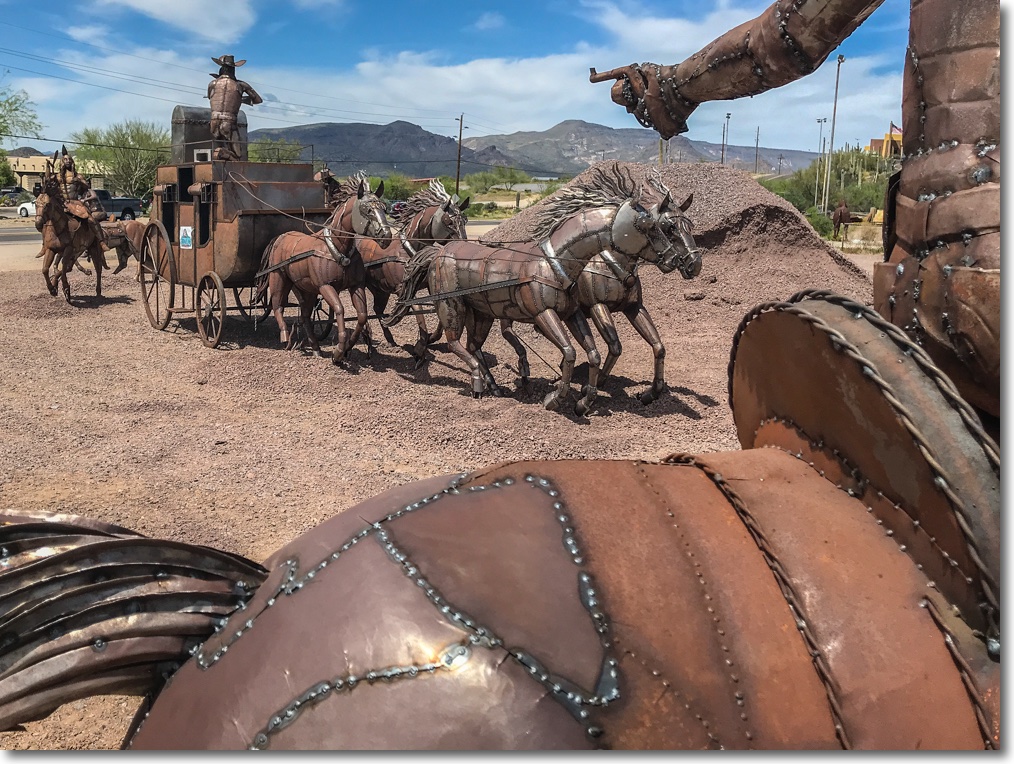Oh boy!
For those into protective clothing when riding a motorcycle, the Scottsdale riding season runs from September though April. The summers are just too darned hot.
So it was doubly upsetting when my 1975 BMW airhead started running incredibly roughly after a period of smoothness and bliss, robbing me of riding time. The right exhaust was popping and banging and the machine felt like a British product.
So I methodically went through the usual suspects, including points gap, timing, valve lash and so on, only to find all within spec. Next I turned my attention to the carburetors even though they had been recently overhauled and all rubber O rings and diaphragms replaced. And it was when removing the right hand carb that I noticed that the choke lever on the carb was at ‘full choke’ whereas the lever controlling that carb part was at ‘no choke’. The lever on the engine housing is connected to the carb with stiff wires in a steel and vinyl sheath, conferring a push/pull action on the carb-end controls to choke or de-choke the carb. And full choke is absolutely necessary on an airhead BMW which is notoriously unwilling to start from cold otherwise. This is probably inherited machine memory from distant times past and the Russian front of 1941/2.
To cut to the chase, when I operated the choke lever the left carb choke responded as expected but the right did not budge. So there must be a fault in the choke lever assembly which I duly removed from the engine housing and dismantled.
Here’s what it looks like , and as you can see it complies with the key dictate handed down in school to all German engineering grads: “Why make it simple when complex works just as well?”. Magura’s engineers, the designers and makers of this assembly, clearly complied with this instruction:
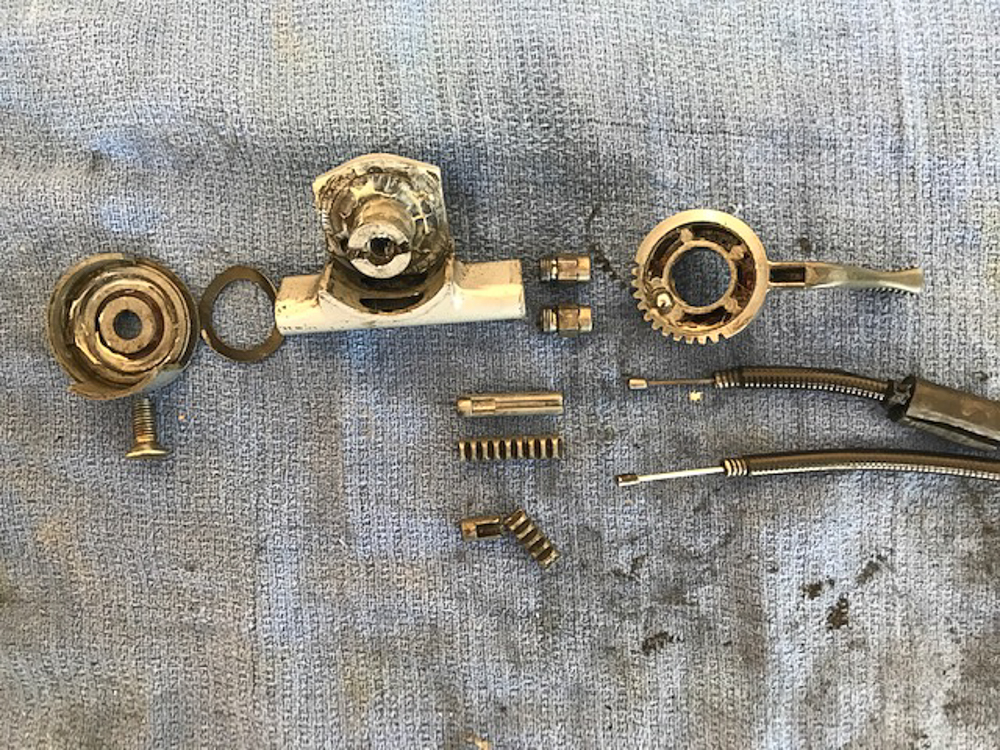
The clutch lever assembly dismantled.
As is clear from the image, one of the two toothed racks (the replacement is included), which are driven by the pinion with lever attached, had fractured. Thus full choke could be engaged on the carb as that’s a pushing action, but retraction was impossible owing to the fractured rack. So the right cylinder was running on ‘full rich’ all the time, which is not a performance enhancing feature. Quite how a hard steel part fails in tension when it is subjected to very light forces beats me, but after 45 years of use I guess I should not complain.
How does it work? The cover forces down the wave washer when the retaining screw is tightened. The pinion – the teeth on the lever assembly – moves the two toothed racks into which the stiff wires leading to the carbs are inserted. The two retaining nuts serve to keep the racks in place and are threaded to accept the steel, vinyl covered cable sheaths. The force of the cover on the pinion engages the ball bearing to provide detents – full, half and off. Why make it simple ….
I searched the parts fiche for a replacement rack – a 10 cent part – and when that failed I reverted to the 45 year-old illustrated book which is much more detailed, hoping to learn the part number for the rack and thus procure a replacement. No such luck for no components were listed for this assembly. You either buy the whole thing or do without. Very un-German, considering the assembly is easily dismantled. I posted a lament on the BMW MOA airhead forum and luckily one member there had a spare rack which he mailed me gratis, free and for nothing! I sent him a six pack as thanks.
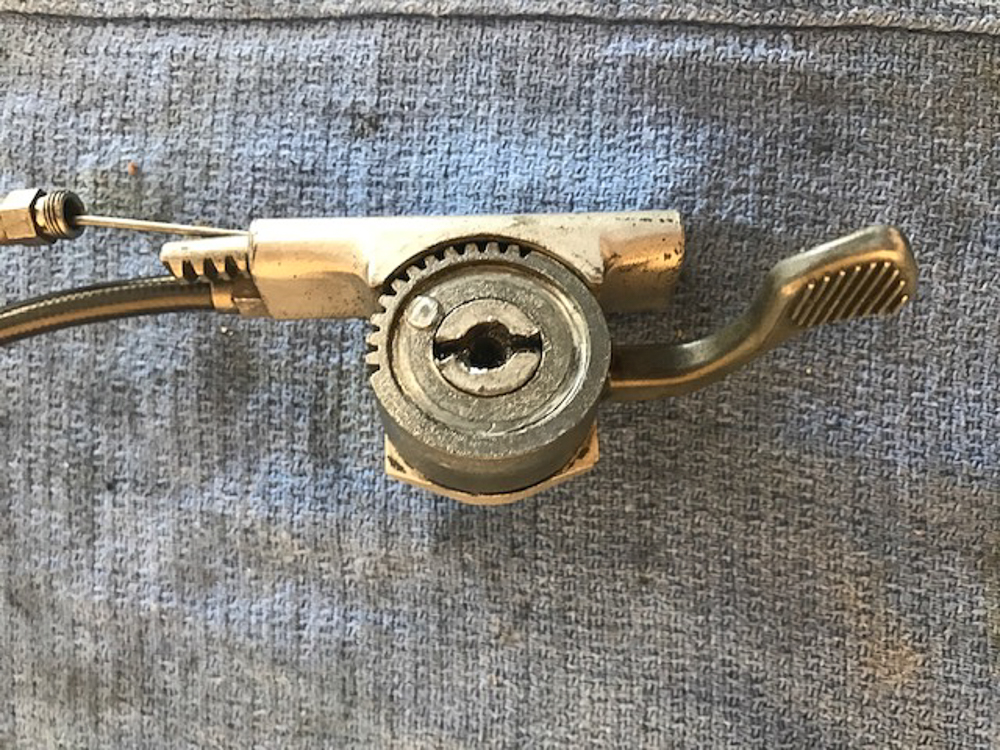
Wire and rack installation.
The racks are installed one at a time by dragging them in using the pinion/lever, then the retaining nuts are installed to secure the racks.
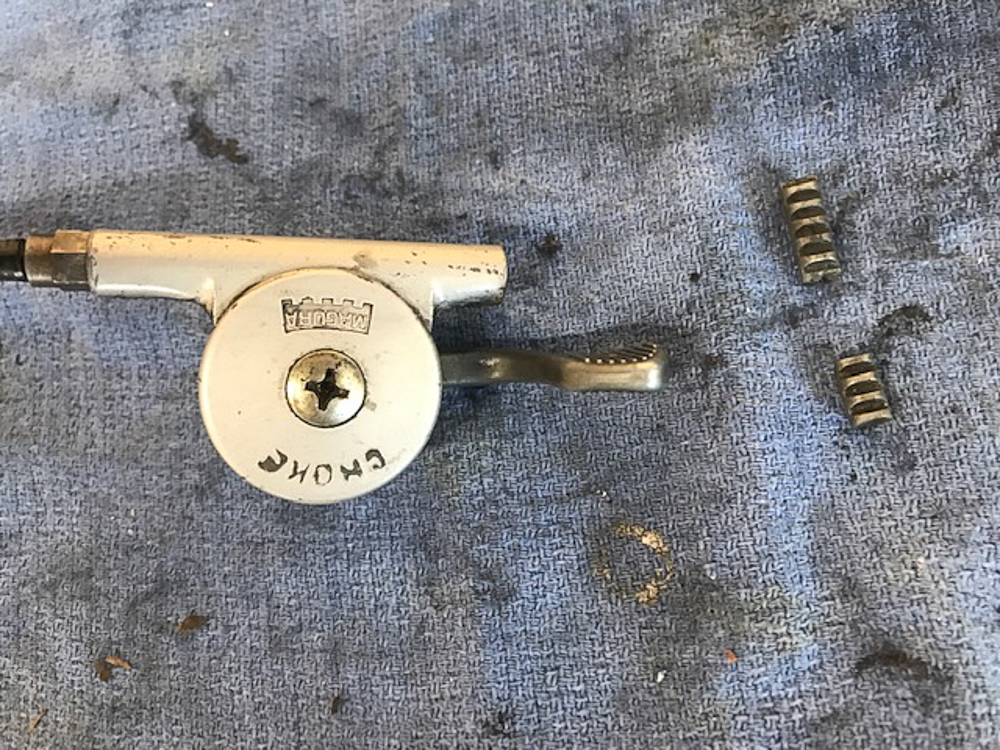
Assembly completed, after greasing moving parts.
And if you think that German attention to detail is as good as it gets, kindly explain to me why Magura managed to stamp its logo upside down and do a truly execrable job of engraving? Still, had this been a British design you can be assured the whole machine would have been on the scrap heap …. 40 years ago.
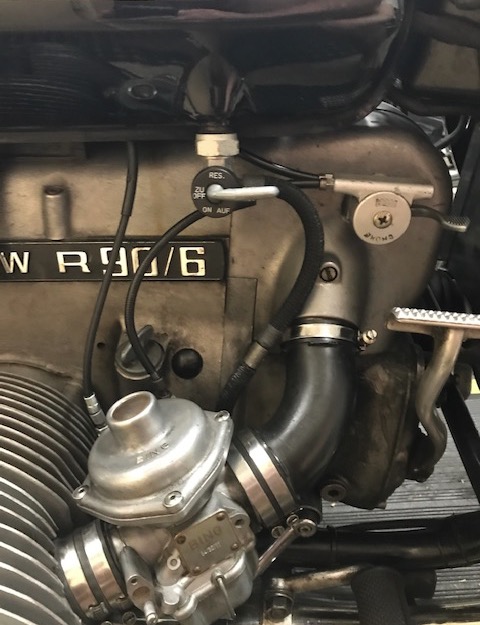
Installed.
Anyway, the clutch lever assembly is now reinstalled and I am enjoying the short remainder of the Scottsdale riding season.

